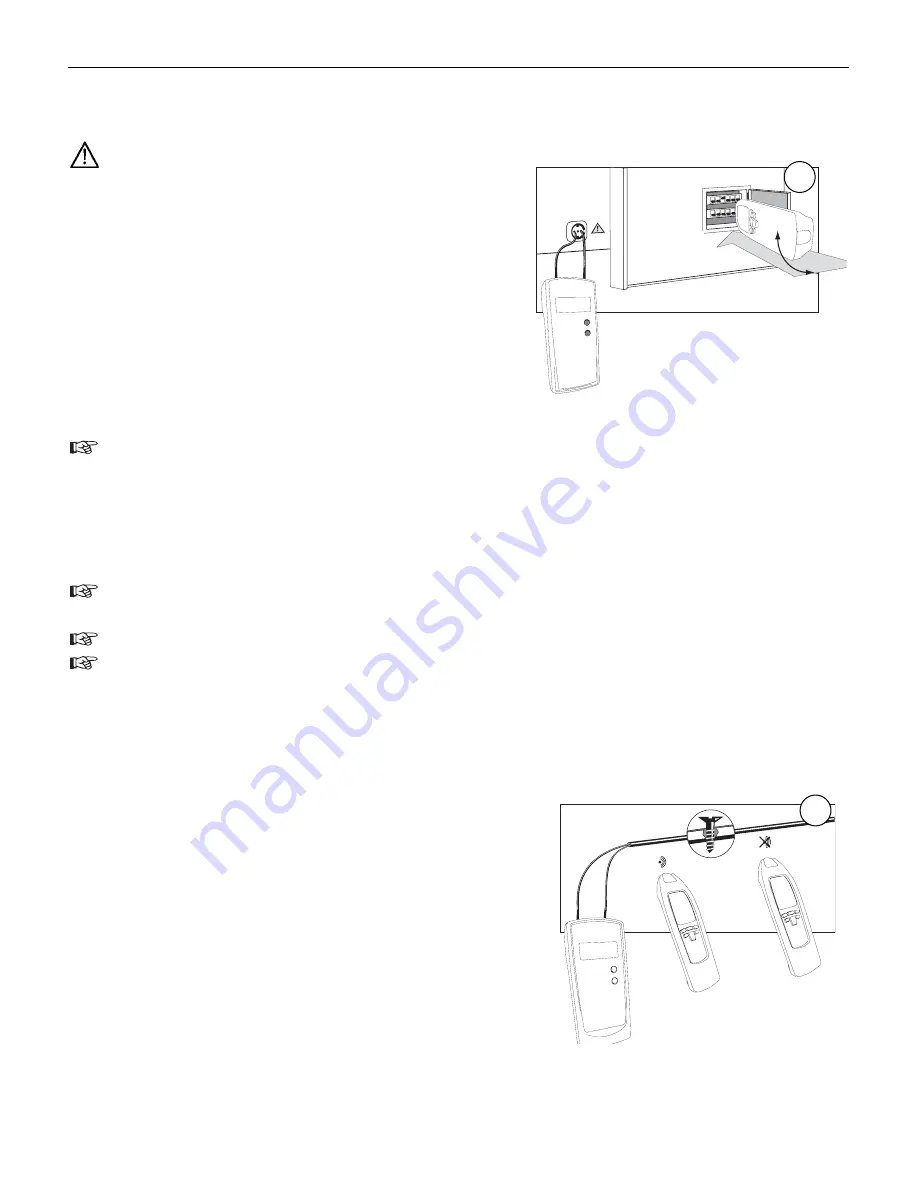
Locating Fuses (dual-pole application)
When connecting in live circuits, the safety directions
must absolutely be respected.
Insert into the current circuit of a multifamily residential
structure within a socket between L1 and N and switch
the transmitter to "LEVEL I".
You may assign the signal in the secondary distribution
and main distribution by transmitter pre-setting "LEVEL
I". Thus, fuses and automatic devices can definitely be
assigned to a certain current circuit.
The detection or assignment of the fuse strongly depends on the wiring realised within the dis-
tribution. To obtain a result as precise as possible, the cover should be removed and the supply
line to the fuse should be traced.
• Set transmitter to LEVEL I
The switching with button 4 from »LEVEL I« to »LEVEL III« the sensitvity of Distance is increa-
sed up to s factor of 5.
Setup: selective mode, minimal sensitivity
Safety cut-outs of different manufacturers have different installation positions for magnetic coils.
If no evident signal can be found by the receiver in the position shown below it is advised to mo-
dify the position by 90° towards the left or the right.
Locating of short-circuits in conductors (doubel-pole applicaion
Requirements:
• Any existing circuits within the cable must be voltage-
free.
• Connect transmitter in accordance with Figure 11.
• Carry out this example as described in the application
example
Note that the tracing depth for sheathed cable and con-
ductors are different due to the fact that the individual leads
in the sheathed cable are twisted around themselves.
Usually, short-circuits can only be correctly detected when
the short-circuit resistance is lower than 20 Ohm. The verification of the short-circuit resistance can
be carried out with any multimeter.
19
Fluke 2042
Users manual
10
11










































